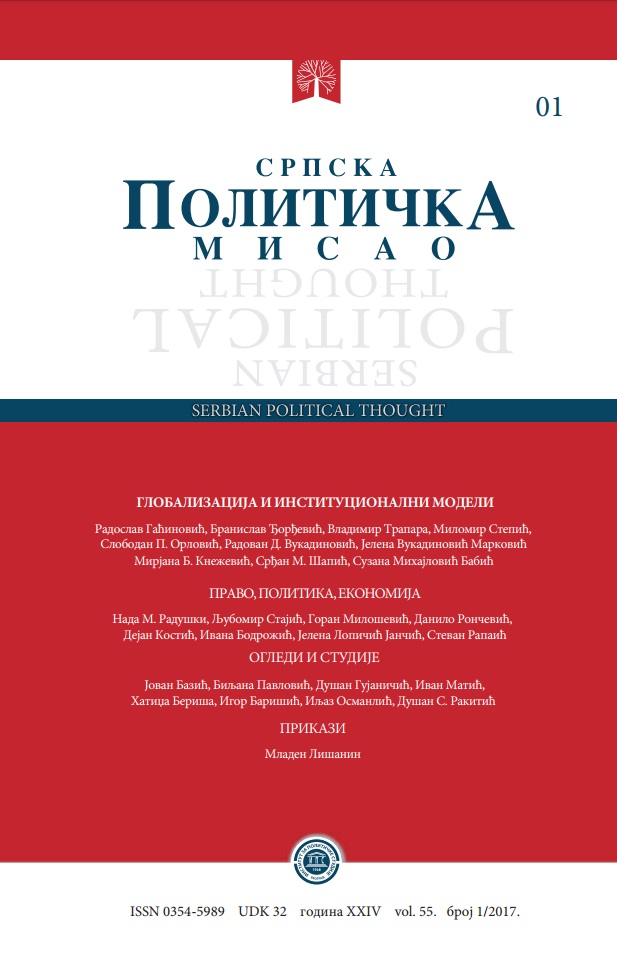Утицај страних директних инвестиција на привредни развој града Новог Сада
Impact of Foreign Direct Investment on Economic Development of the City of Novi Sad
Author(s): Stevan RapaićSubject(s): Micro-Economics, Political economy, Economic development
Published by: Институт за политичке студије
Keywords: foreign direct investment; local economic development; Novi Sad; privatization; theory of spillover effects; local government; employment
Summary/Abstract: In the last two decades there was a lot of talk about FDI. This type of foreign capital has been presented to the public as the most effective tool in the fight against unemployment and poverty in Serbia. Considering that the impact of FDI is most visible at the local level, where you can clearly spot the differences in the quality of life of the local community, we decided to tie our research to local economic development of the city of Novi Sad. This city was chosen because it represents a positive example in attracting FDI, of which only the nonfinancial sector reached more than 2.5 billion euro. In this regard, our main research question was: Have 2.5 billion euro of FDI contributed to the economic development of the city of Novi Sad? We started our research with a thesis that there is no necessary causality between foreign direct investment and local economic development. This is contrary to the theory of the spillover effects. We believe that foreign direct investment would not, only by its very presence, cause spillover effects on the local economy. Using correlation analysis we managed to prove that FDI didn’t have any impact on the economic development of the city of Novi Sad. The values of coefficient of correlation between FDI inflow and indicators of economic development of the city of Novi Sad, unambiguously showed that there is no linear relationship between these two. As indicators of local economic development we used: demographic data, data on employment and wages, as well as data relating to the budget revenues of local government. The research was limited on the period since 2001, when the country began to liberalize its investment and trade policy, by the end of 2013. We concluded that in spite of existence of certain less significant impact on some of the indicators, there is no expressed link between FDI and economic development of the city of Novi Sad. Thus, the impact of FDI on economic development of the city of Novi Sad, in the period 2001-2013, is such that it can only be subsumed under the level of statistical error. After reviewing the analysis, there was a basic question: Why FDI worth up to 2.5 billion euro in the city of Novi Sad did not contribute to the local economic development? The answer to this question could be found in the structure of FDI, as well as the theory of spillover effects. This theory, presented in the paper, is separating two primary channels of technology transfer from FDI on the domestic economy. The first relates to the overflow in the supply chain, and the other in relation to domestic enterprises competitors. Sectors that the most FDI ended in Novi Sad are: real estate, retail, energy and insurance. In other words, those are the sectors where it was very hard to come to the transfer of technology and knowledge. More specifically, the manufacturing sector has been neglected, and the list of the biggest investors comes to four companies: BIG SEE that invested in shopping center, Mercator which invested in retail stores that sells consumer goods, Gazprom which has privatized national petrol company, and UnipolSai which privatized DDOR Novi Sad (insurance company). Only these four companies accounted for almost 2.2 billion euro in foreign investment.
Journal: Српска политичка мисао
- Issue Year: 2017
- Issue No: 1
- Page Range: 255-277
- Page Count: 23
- Language: Serbian

